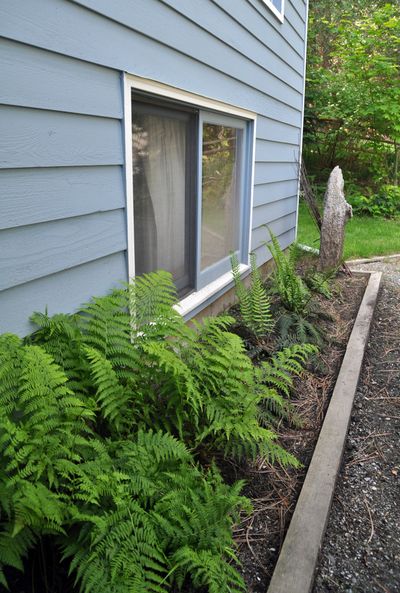Gardening: With right spot and some care, ferns can grow well in our region

One doesn’t always think of ferns and Inland Northwest gardening in the same idea. Our climate isn’t anything like the West Side of the state, where sword fern can grow to 6 feet tall and other types of fern make a good ground cover.
In their native habitat, ferns grow under the shade of dense conifers and small trees particularly in old-growth forests, where the soil has had years to build up a thick layer of organic matter and the sun hits the ground sporadically through the day if at all. The rich soil provides food and holds in the moisture while the trees protect the ferns from direct sunlight.
Our area is similar enough that with a little attention, ferns can add a soft, upright texture to the shade garden. To translate that native habitat into an Inland Northwest garden, look for shady spots that tend to be or can be kept damp. Ferns can handle early-morning sun but definitely need protection from the afternoon sun.
Once you find the perfect spot, take the time and effort to enrich the soil with lots of good compost. You can’t put too much compost in for ferns. Adjust your sprinklers to assure the area gets a regular supply of moisture. Consider running a soaker hose around the area and setting it on a timer. Mulch the plants well to mimic their native habitat and to help to keep the moisture in. They will be a bit slow coming out in the spring, so be patient. Watch for the coiled stems called fiddleheads to emerge and unroll into the new fronds.
Ferns are not troubled by any diseases or insects and are deer-resistant. In the spring, they need no more than a cleanup of dead fronds. Some ferns like sword ferns are semi-evergreen and need trimming when the fronds die of their own free will.
Here are a few good ferns for the Inland Northwest:
• Japanese Painted Fern (Athyrium niponicum ‘Pictum’) is a deciduous ground-hugging fern that gets about a foot tall. It spreads slowing by creeping rhizomes. Its slightly arching fronds are an attractive silver green with purple ribs. It does best in the front of a border where it can get some early-morning sun and light shade the rest of the day.
• Lady Fern (Athyrium felix-femina) is a deciduous clump fern with lacy, slightly arching fronds. Its soft green fronds can grow to 3 or 4 feet and are great grown with mounding hostas.
• Wood ferns (Dryopteria family) are a large group of ferns characterized by the classic stiff stalks that hold up finely divided, pale green fronds that can grow to 2 or 3 feet, perfect for the back of the border or under trees. The native bracken ferns we see in the wetter parts of the region are part of this family. Two favorites in this family are the male fern (D. filix-mas) and autumn fern (D. erythrosora).